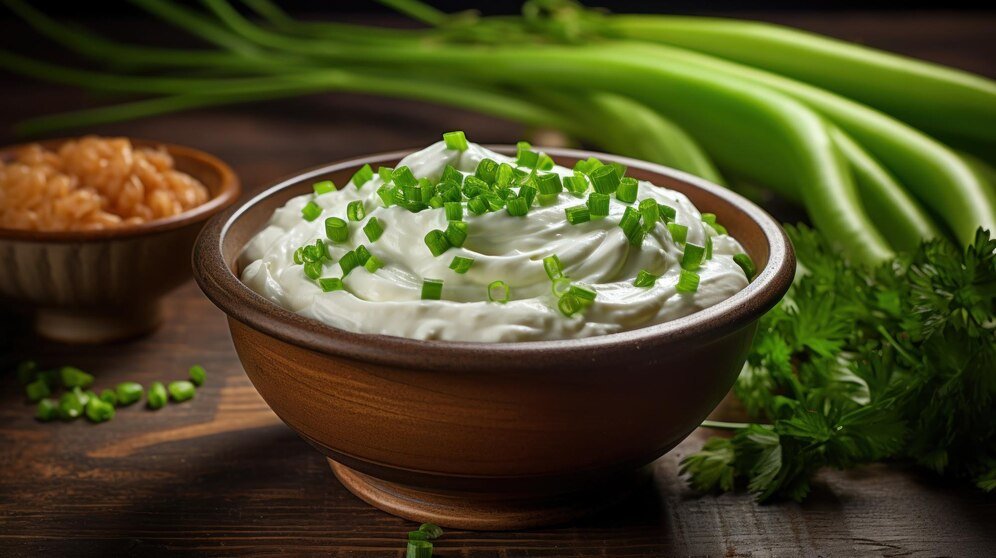Welcome to the vibrant world of Kecveto! Prepare to embark on a journey of history, culture, and mouthwatering flavors. Whether you’re a seasoned foodie or simply curious about exploring new culinary delights, Kecveto will captivate your taste buds and leave you craving more.
In this in-depth look at Kecveto, we’ll learn about its interesting history and cultural importance, its traditional preparations and ingredients, and its modern adaptations and changes. We’ll also tell you where to find it and how to enjoy it most. So buckle up because we’re about to take you on a culinary adventure you’ll never forget!
If you’ve never heard of Kecveto before or if it’s been lingering at the back of your mind as a compelling mystery waiting to be unraveled – fear not! We’ve got all the answers right here. So, let’s get started by diving headfirst into the captivating history of this delectable dish that has stood the test of time.
The Origins and History of Kecveto
Kecveto, a dish that has stood the test of time, has a fascinating history spanning centuries. Its origins can be traced back to the rugged mountain regions of Eastern Europe. While its exact birthplace is still debated among culinary historians, one thing is certain – It has become an integral part of the local culture and cuisine.
The story goes that shepherds who walked the vast fields looking for places for their flocks to graze came up with Kecveto. Even though they didn’t have much, they created a filling meal using simple things like bell peppers, tomatoes, soft chunks of meat, and spices that smell good.
Kecveto made its way into village homes over time and became a beloved food at special events like weddings and harvest fairs. It wasn’t just a meal but a celebration of society and unity.
As generations passed down their cherished recipes from one family to another, variations of this traditional dish began to emerge. Some added smoky paprika for an extra kick, while others introduced zesty lemon juice to brighten the flavors.
Today, you can find different versions across Eastern Europe, with each region putting its unique twist on the recipe. From Hungary’s spicy “Lecsó” to Serbia’s rich “Djuvec,” there is something for every palate.
The cultural significance attached to Kecveto goes beyond its taste. It symbolizes heritage and tradition – a testament to the resilience and resourcefulness of those who crafted it in simpler times. So next time you savor this delightful dish, remember that you are indulging in more than just food; you are experiencing history on a plate.
Cultural Significance of Kecveto

Kecveto holds a deep cultural significance in the region where it originated. This traditional dish is not just about satisfying hunger; it represents its people’s rich history and heritage.
Kecveto has been prepared for centuries for special occasions and celebrations, bringing families and communities together. It symbolizes unity, love, and togetherness. Preparing this dish involves multiple hands working together, each contributing their unique touch to create a masterpiece.
It also shows off the cooking skills passed down from generation to generation. It shows how clever and creative the people who live there are because they have learned to make tasty meals with simple items that are easy to find.
In addition to its taste and smell, Kecveto helps bring people from different cultures together. People who come to the area on vacation or to eat at local places can learn about the customs and values that have made the area what it is.
In today’s fast-paced world, where food often becomes more about convenience rather than tradition, embracing dishes like Kecveto helps preserve cultural practices that might otherwise fade away with time.
By savoring Kecveto’s flavors and appreciating its cultural significance, we can honor our past while fostering understanding between different cultures. So next time you come across an opportunity to try this delightful dish – take it!
Ingredients of Kecveto
Kecveto, a beloved dish with deep roots in Hungarian cuisine, is renowned for its flavorful and hearty qualities. The traditional preparation involves a meticulous process that results in a delectable meal that satisfies both the stomach and the soul.
At its core, kecveto consists of tender pork shoulder (or sometimes beef) simmered in a rich broth until it becomes delicious. However, the carefully selected ingredients that enhance its taste and aroma set this dish apart.
Traditional Preparation
Onions play a crucial role in adding depth to the flavors. They are sautéed until golden brown before being added to the pot, releasing their sweet and savory essence into every spoonful. Garlic also appears, providing an extra punch of flavor to complement the meat.
To infuse complexity into the dish, paprika – Hungary’s prized spice – is generously sprinkled throughout. This vibrant red powder adds color and smoky undertones while imparting a mild heat that tantalizes your taste buds.
Of course, traditional kecveto would only be complete with tomatoes. Their natural acidity helps balance out the richness of the meat while contributing tanginess to create harmony within each bite.
Allow this stew to cook slowly over low heat for several hours to get the soft meat. Those great tastes can blend beautifully as they go through each juicy piece of pork or beef cooked this way.
It was originally served on rainy fall nights with buttery egg noodles or crusty bread. However, modern versions serve it over mashed potatoes or spaetzle, which are small dumplings made from eggs and flour, to make it more comfort food-like.
Whether you’re seeking warmth during chilly winter nights or simply craving authentic Hungarian fare bursting with robust flavors, exploring kecveto is an experience you will want to experience. So, venture into the realm of traditional Hungarian.
Modern-Day Adaptations and Variations

Traditional dishes like Kecveto have evolved to cater to different tastes and dietary preferences in today’s fast-paced world. While the essence of Kecveto remains unchanged, modern adaptations and variations have emerged.
One popular adaptation is the inclusion of additional vegetables such as bell peppers, mushrooms, or zucchini. These additions not only enhance the flavor but also provide a nutritional boost. Some chefs even experiment with exotic ingredients like artichokes or olives for a unique twist.
There are now vegetarian and vegan forms for people who want a lighter choice. You can use tofu or seitan as a protein alternative instead of meat to make a filling plant-based meal.
Adding tastes from different types of food is another new change. Asian spices or leaves from the Mediterranean, like oregano and basil, could be used by chefs. This mix of ingredients from different cultures gives the dish new flavors while keeping its main parts.
In recent years, there has also been an emphasis on healthier cooking methods, which focus on reducing oil and using leaner cuts of meat. Grilling or baking instead of frying adds a delicious smoky flavor without sacrificing taste.
Where to Find and Enjoy Kecveto
Now that you have learned about the rich history and cultural significance of Kecveto let’s dive into how you can experience this delightful dish for yourself. Fortunately, It is easy to find if you know where to look!
In Hungary, many traditional restaurants and local eateries proudly serve Kecveto. Budapest, the vibrant capital city, offers a wide range of dining options for this culinary delight. There’s something for everyone, from upscale restaurants to cozy street food stalls.
When ordering Kecveto, be prepared for a feast! This hearty dish typically consists of tender chunks of meat stewed with various vegetables and spices. The slow cooking ensures the flavors meld together beautifully, creating a savory symphony on your taste buds.
For the best Kecveto experience, eat it with fresh bread or rice. It is impossible to say no to the tasty sauce that goes well with these sides. Add a glass of Hungarian wine or pálinka (fruit brandy) to your meal to make it even better.
Don’t worry if you want veggie choices or can’t eat certain foods. Many places serve veggie versions of Kecveto that don’t use meat but plant-based foods like tofu or tempeh.
Plenty of recipes are available online if you’re feeling adventurous and want to try preparing Kecveto at home. Experiment with different ingredients and seasonings to create your unique twist on this classic Hungarian dish.
Whether you savor it in a restaurant or cook it at home, experiencing it is an absolute must for any food lover visiting Hungary. The blend of flavors and textures will leave you craving more – trust me!
So go ahead and embark on this culinary journey through Hungarian cuisine by indulging in the deliciousness of Kecveto. Your taste buds will thank
FAQs on Kecveto
Curious about Kecveto? We have all the answers to commonly asked questions about this intriguing dish.
What is Kecveto?
Kecveto is a traditional Balkan stew that originated in Hungary. It is typically made with tender chunks of meat, such as pork or beef, cooked slowly with various vegetables and spices to create a rich and flavorful dish.
Is Kecveto spicy?
The level of spiciness in Kecveto can vary depending on the recipe and personal preference. Some versions include hot paprika or chili peppers, while others are milder in flavor. If you have specific preferences, it’s best to ask the chef or server about the spice level.
Can I make a vegetarian version of Kecveto?
Absolutely! While traditionally made with meat, plenty of delicious vegetarian adaptations are available. You can replace the meat with tofu, mushrooms, or even lentils for protein-packed alternatives without compromising taste.
How long does it take to prepare Kecveto?
The cooking time for Kecveto can vary depending on the recipe and method used. However, it generally takes 2-3 hours to slow-cook the ingredients until they become tender and infused with flavors.
Are there any regional variations of Kevcetvo?
Yes! Like many traditional dishes, each region has its unique twist on Kevcetvo. In some areas, they may add local ingredients or use different types of meat. Exploring these regional variations allows you to discover this beloved dish’s new flavors and culinary traditions.
Conclusion: Why You Should Try Kecveto
After delving into the rich history, cultural significance, and mouthwatering preparation of Kecveto, it’s clear that this traditional dish holds a special place in Hungarian cuisine. Whether you’re a food enthusiast looking to explore new flavors or someone eager to immerse yourself in the culture and traditions of Hungary, trying Kecveto is an absolute must.
By savoring this hearty stew made with tender meat and an array of vegetables cooked to perfection, you’ll experience the true essence of Hungarian gastronomy. The combination of flavors and textures will tantalize your taste buds and leave you craving more.
Make sure to discover what makes Kecveto so special. Take a journey into its history, embrace its cultural significance, relish its traditional preparation methods, seek out modern adaptations if desired – but above all else – permit yourself to enjoy every single bite!

